For the short term, today’s candlestick and Stochastics indicate what may happen next and the Elliott wave count provides Fibonacci ratios for targets.
Summary: The triangle wave count is now preferred.
The zigzag wave count will be discarded if price prints a full daily candlestick below the black (2)-(4) trend line on the zigzag’s weekly and daily charts.
For the short term, look for a bounce here. A downwards trend is now in place. Bounces are an opportunity to join the trend. The bounce may end about either 1,279 (more likely) or 1,290 (slightly less likely).
The target for this downwards wave is 1,216, and downwards movement may be limited to no lower than 1,123.08.
Always trade with stops to protect your account. Risk only 1-5% of equity on any one trade.
New updates to this analysis are in bold.
Grand SuperCycle analysis is here.
Last historic analysis with several monthly and weekly charts is here, video is here.
At this time, for the main monthly wave count, there are four weekly wave counts looking at cycle wave b as four different possible structures. Only two shall be published each day, one bearish and one bullish.
WEEKLY CHART – TRIANGLE
It is possible that cycle wave b may be an incomplete triangle. The triangle may be a contracting or barrier triangle, with a contracting triangle looking much more likely because the A-C trend line does not have a strong slope. A contracting triangle could see the B-D trend line have a stronger slope, so that the triangle trend lines converge at a reasonable rate. A barrier triangle would have a B-D trend line that would be essentially flat, and the triangle trend lines would barely converge.
Within a contracting triangle, primary wave D may not move beyond the end of primary wave B below 1,123.08. Within a barrier triangle, primary wave D may end about the same level as primary wave B at 1,123.08, so that the B-D trend line is essentially flat. Only a new low reasonably below 1,123.08 would invalidate the triangle.
Within both a contracting and barrier triangle, primary wave E may not move beyond the end of primary wave C above 1,365.68.
Four of the five sub-waves of a triangle must be zigzags, with only one sub-wave allowed to be a multiple zigzag. Primary wave C is the most common sub-wave to subdivide as a multiple, and this is how primary wave C for this example fits best.
Primary wave D must be a single structure, most likely a zigzag.
One triangle sub-wave tends to be close to 0.618 the length of its predecessor; this gives a target for primary wave D.
There are no problems in terms of subdivisions or rare structures for this wave count. It has an excellent fit and so far a typical look.
DAILY CHART – TRIANGLE
Primary wave D may be unfolding lower as a single zigzag, and within it intermediate waves (A) and (B) may be complete.
The target is widened to a $5 zone calculated at two degrees. This should have a reasonable probability.
Within intermediate wave (C), it looks likely that minor wave 2 may now be over. However, it would have been shallow. It is possible that minor wave 2 may continue further as a flat correction. If minor wave 2 moves higher, it may not move beyond the start of minor wave 1 above 1,364.36.
This wave count now expects to see an increase in downwards momentum as a third wave unfolds.
Another bearish signal from On Balance Volume increases the probability of this wave count (or any bearish wave count). This wave count at this time will be the preferred wave count.
Add a base channel about minor waves 1 and 2. Along the way down, bounces for lower degree second wave corrections may be expected to find resistance at the upper edge of the base channel. Copy this channel over to the hourly chart.
HOURLY CHART
Minor wave 3 may only subdivide as an impulse. The target for minor wave 3 to end is equality in length with minor wave 1, because minor wave 2 was shallow. This target fits with the lower target for intermediate wave (C) to end.
Within minor wave 3, minute wave i may have been over at the last low. A bounce may unfold for minute wave ii. Targets are both the 0.382 and 0.618 Fibonacci ratios, with the 0.382 ratio favoured as the strong downwards pull of a third wave at two degrees may now force minute wave ii to be more shallow than otherwise.
Minute wave ii may unfold over a very few days. It may not move beyond the start of minute wave i above 1,308.99.
WEEKLY CHART – ZIGZAG
Cycle wave b may be a single zigzag. Zigzags subdivide 5-3-5. Primary wave C must subdivide as a five wave structure and may be either an impulse or an ending diagonal. Overlapping at this stage indicates an ending diagonal.
Within an ending diagonal, all sub-waves must subdivide as zigzags. Intermediate wave (4) must overlap into intermediate wave (1) price territory. This diagonal is expanding: intermediate wave (3) is longer than intermediate wave (1) and intermediate wave (4) is longer than intermediate wave (2). Intermediate wave (5) must be longer than intermediate wave (3), so it must end above 1,398.41 where it would reach equality in length with intermediate wave (3).
Within the final zigzag of intermediate wave (5), minor wave B may not move beyond the start of minor wave A below 1,236.54. However, if it were now to turn out to be relatively deep, it should not get too close to this invalidation point as the lower (2)-(4) trend line should provide strong support. Diagonals normally adhere very well to their trend lines. If the (2)-(4) trend line is breached by a full daily candlestick below and not touching it, then this wave count will be discarded in favour of the triangle weekly wave count.
Within the diagonal of primary wave C, each sub-wave is extending in price and so may also do so in time. Within each zigzag, minor wave B may exhibit alternation in structure and may show an increased duration.
Within intermediate wave (1), minor wave B was a triangle lasting 11 days. Within intermediate wave (3), minor wave B was a regular flat lasting 60 days. Intermediate wave (5) is expected to be longer in price than intermediate wave (3), and it may also be longer in duration, and so minor wave B within it may also be longer in duration.
This weekly chart sees the upwards wave labelled primary wave A as a five wave structure. It must be acknowledged that this upwards wave looks better as a three than it does as a five.
DAILY CHART
Minor wave B may be a double zigzag, which may now be complete.
The first zigzag in the double is labelled minute wave w. The double is joined by a three in the opposite direction, a double zigzag labelled minute wave x. The second zigzag in the double is labelled minute wave y, and it is deepening the correction, which is the purpose of second zigzags.
Minute wave y may end at support at the lower black (2)-(4) trend line, which is copied over here from the weekly chart. This is the lower diagonal trend line.
Today’s candlestick has a long lower wick overshooting the (2)-(4) trend line. This is acceptable for this wave count, but a breach of this line is not. If a full daily candlestick prints below the line and does not touch it, then this wave count will be discarded.
TECHNICAL ANALYSIS
WEEKLY CHART
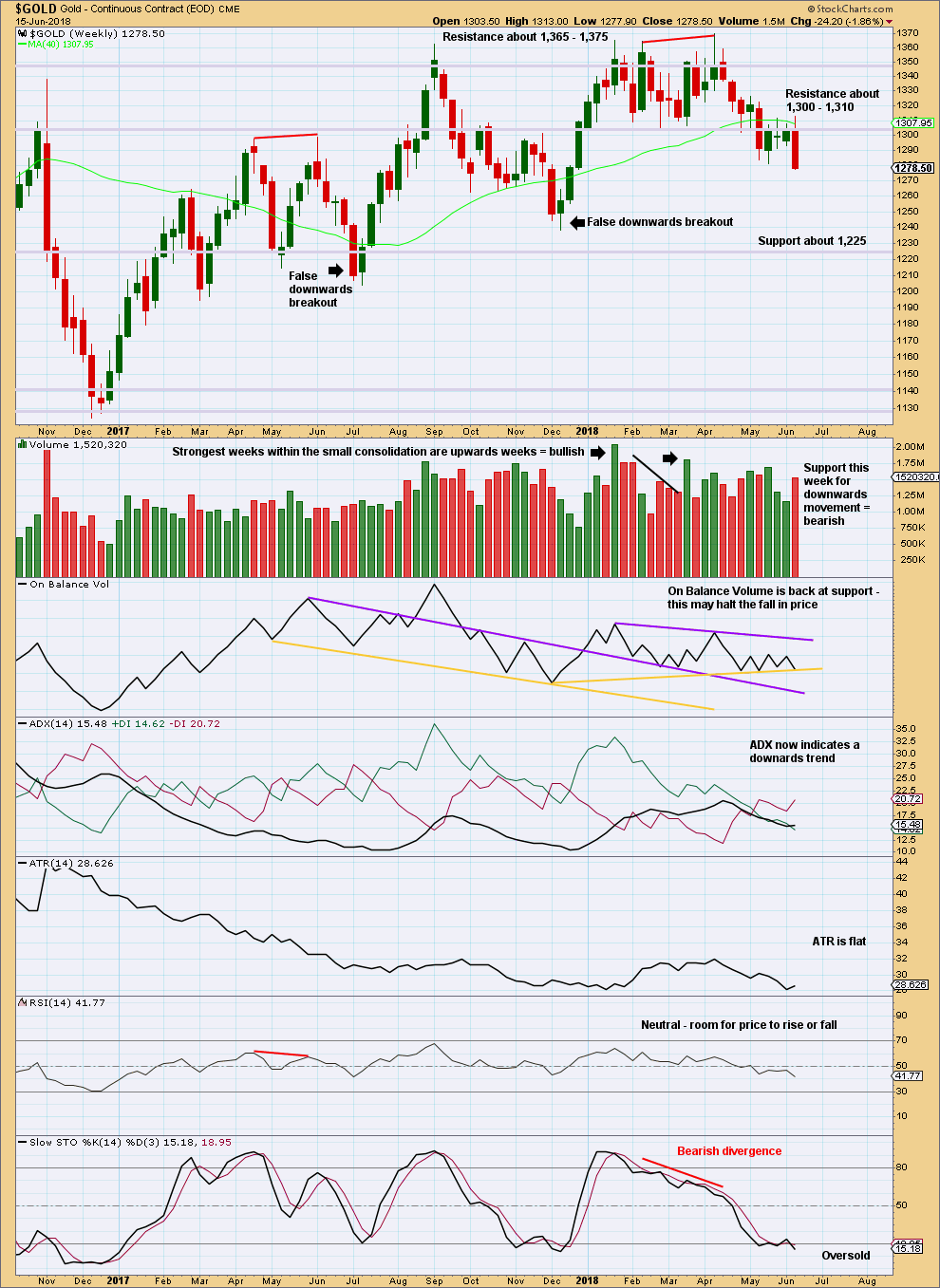
Click chart to enlarge. Chart courtesy of StockCharts.com.
Of recent weeks, it is still an upwards week that has strongest volume.
On Balance Volume is right at support; this may halt the fall in price here.
However, this weekly candlestick is very strong; there is no bullish long lower wick. ADX now indicates a downwards trend in place here.
Overall, this chart is bearish. But volume and On Balance Volume still point to a possible false downwards breakout.
DAILY CHART

Click chart to enlarge. Chart courtesy of StockCharts.com.
Price needs to close back above 1,310 in order for the the current downwards breakout to be now considered false, but it has not done that yet. At this stage, at least for the short term, it looks unlikely to do so.
Let us look back at major lows from November 2015 and see how price behaved in the days immediately after.
A major low was found on the 3rd of December, 2015. The following day for the 4th of December saw a strong Bullish Engulfing reversal pattern with support from volume, and it came with strong double bullish divergence between price and both of RSI and Stochastics. That low in hindsight looks fairly strong.
Another reasonable low was found on the 31st of May, 2016. There was no reasonable bullish divergence at the low between price and either of RSI or Stochastics. At the low, the candlestick had a bullish long lower wick (although with a reasonable upper wick, it is not properly a Hammer reversal pattern). The two days following the low for the 1st and 2nd of June were inconclusive; both closed red and could at the time have been considered a potential bear flag pattern developing; both had a balance of volume downwards but showed strongly declining volume. Not until the third day, with a very strong upwards day with support from volume to complete a very strong Bullish Engulfing reversal pattern, was a low set in place.
A major low was found on the 15th of December, 2016. At the low, the candlestick had a somewhat bullish long lower wick; volume for the last downwards day supported the fall in price; and, there was clear and strong bullish divergence between price and RSI and Stochastics. The next two days closed green but did not have support from volume. The following two days closed red and did have support from volume. At that stage, four days out from a major low, the short term volume profile was bearish and it looked like a bear flag pattern may be developing. It was not until seven days after the low on the 27th of December that a reasonable bullish day unfolded, and even then it did not have good support from volume. This low did not look clear.
The next low to study occurred on the 10th of March, 2017. That day was inconclusive, closing green, but the balance of volume was downwards and volume supported that downwards movement. At the low, there was no reasonable bullish divergence between price and either of RSI or Stochastics. It was not until three days after the low on the 15th of March that price bounced strongly to complete a strong Bullish Engulfing reversal pattern, which had good support from volume.
The next low to study occurred on the 9th of May, 2017. On that day RSI reached oversold, but there was no divergence between it and price nor price and Stochastics. Right up until six days after the low the short term volume profile could have been judged to be bearish; rising price did not have support from volume. It was clear a low was in place on the 17th of May as a very strong Bullish Engulfing reversal pattern unfolded with strong support from volume. The small bounce up until that date could have been judged to be a bounce within an ongoing downwards trend.
The next low to study occurred on the 10th of July, 2017. There was no divergence at the low between price and RSI, but there was strong clear bullish divergence between price and Stochastics. There were two candlesticks with bullish long lower wicks at the low, but volume remained lighter than the prior downwards day of the 9th of July. This looks like a selling climax in hindsight, but at the time it could have been judged to support downwards movement. Right up until the 14th of July, five days after the low, it could have been considered a bear flag pattern unfolding. On the 14th of July a strong Bullish Engulfing pattern unfolded with some support from volume.
The last low to study is a very important one on the 12th of December, 2017. This occurred after a downwards breakout below support, which was previously at 1,262. That downwards breakout was short lived; price remained below support for two weeks, and found a low only five days after the breakout. At the low, there was no bullish divergence between price and either of RSI or Stochastics. The first upwards day on the 13th of December had a wide range but a very small real body. It did have good support from volume, but volume remained lighter than most prior downwards days. After that low, price moved steadily higher for weeks, initially on light and declining volume. That low in hindsight was very difficult to pick.
Some conclusions may be drawn in relation to the current situation. The first and strongest conclusion is that lows for Gold (at least for the last two years and five months) are not always very clear at the time. Price can be weak in days immediately following lows; it can remain weak for about five to seven days following lows. Lows do not always come with divergence between price and RSI nor even price and Stochastics, but when they do that offers a clue. With bullish divergence having now disappeared in the current situation, and strongest volume now for a downwards day, it looks like in this case the downwards breakout may be true.
A downwards trend is in place at this time. After a strong volume spike indicating a selling climax, a low may be reached not there but within a very few days. With today’s bullish long lower wick, it looks like a bounce may begin here.
GDX WEEKLY CHART
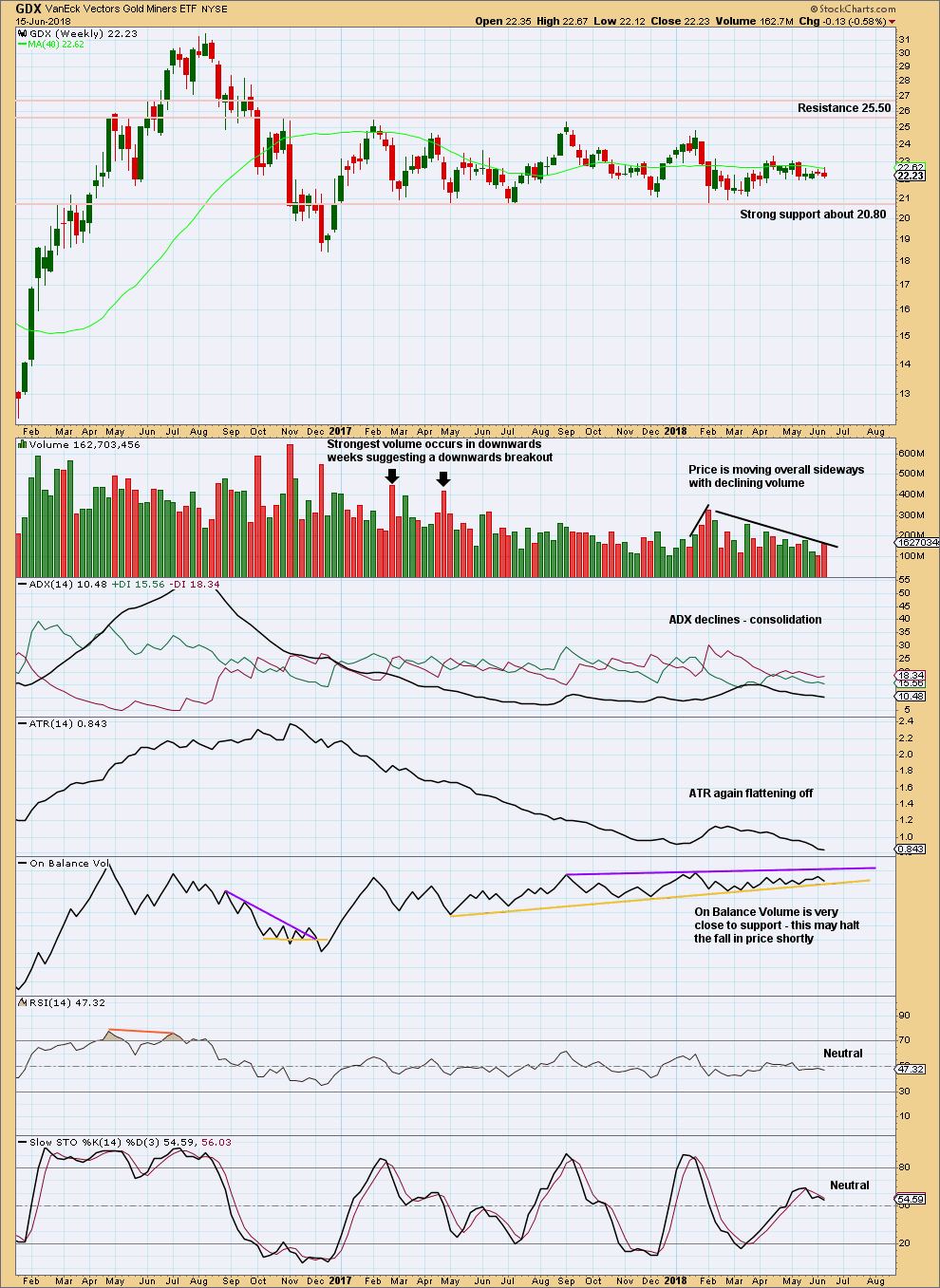
Click chart to enlarge. Chart courtesy of StockCharts.com.
Support about 20.80 has been tested about eight times and so far has held. The more often a support area is tested and holds, the more technical significance it has.
In the first instance, expect this area to continue to provide support. Only a strong downwards day, closing below support and preferably with some increase in volume, would constitute a downwards breakout from the consolidation that GDX has been in for a year now.
Resistance is about 25.50. Only a strong upwards day, closing above resistance and with support from volume, would constitute an upwards breakout.
Overall, a slow upwards swing may be underway. Do not expect it to move in a straight line; it may have downwards weeks within it.
GDX DAILY CHART
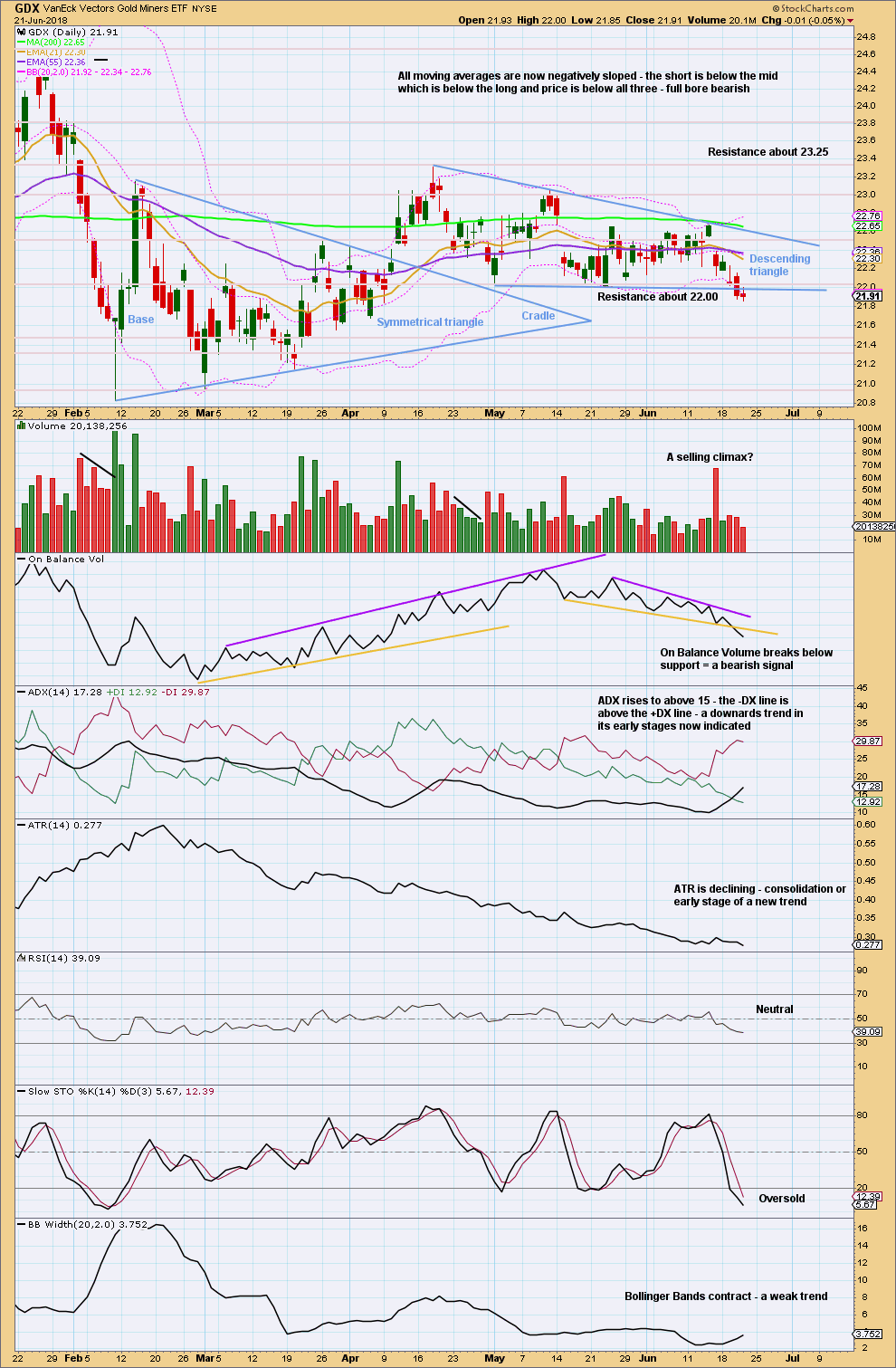
Click chart to enlarge. Chart courtesy of StockCharts.com.
GDX breaks out of the descending triangle today by closing below 22.00. The target is at 20.75. This target expects the larger consolidation noted on the weekly chart to see another test of support.
Published @ 09:40 p.m. EST.

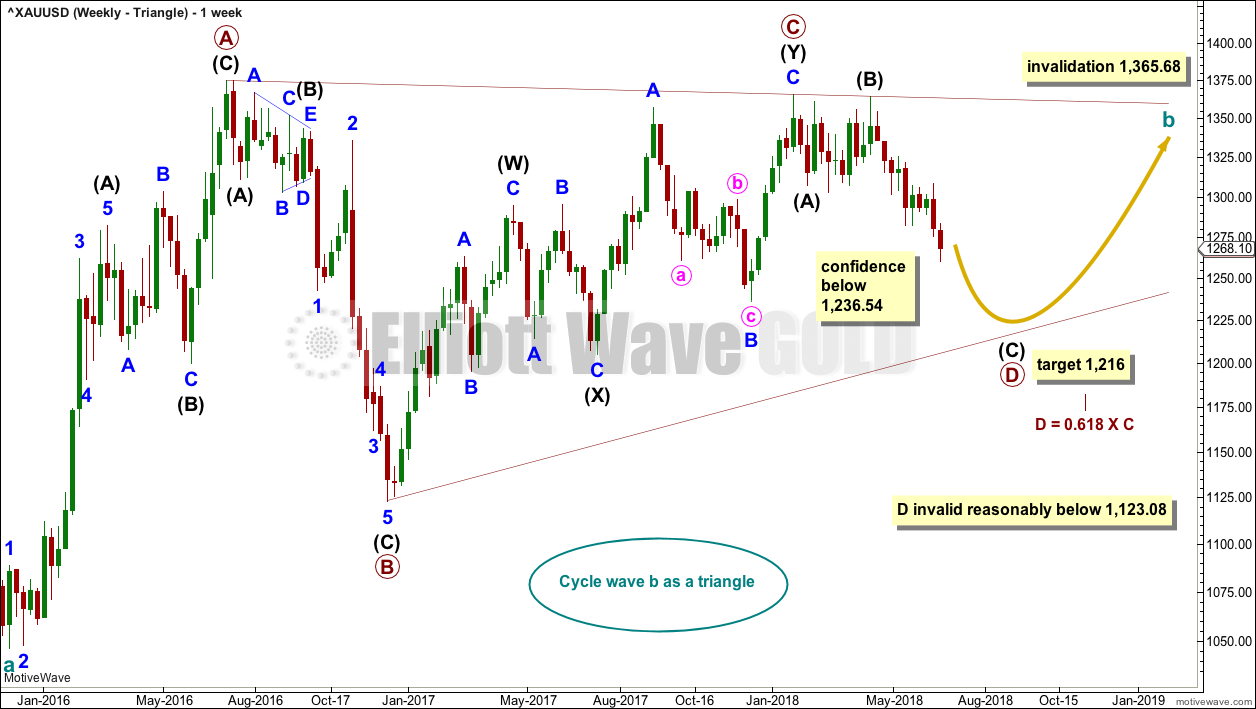
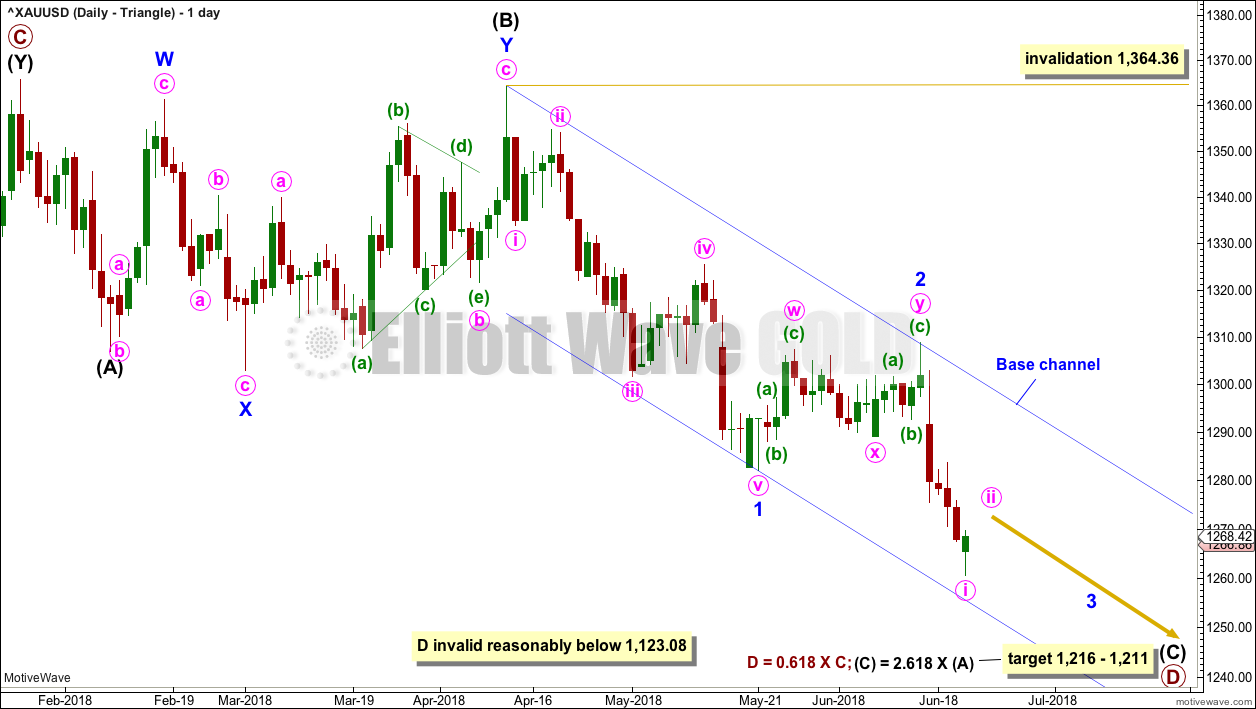
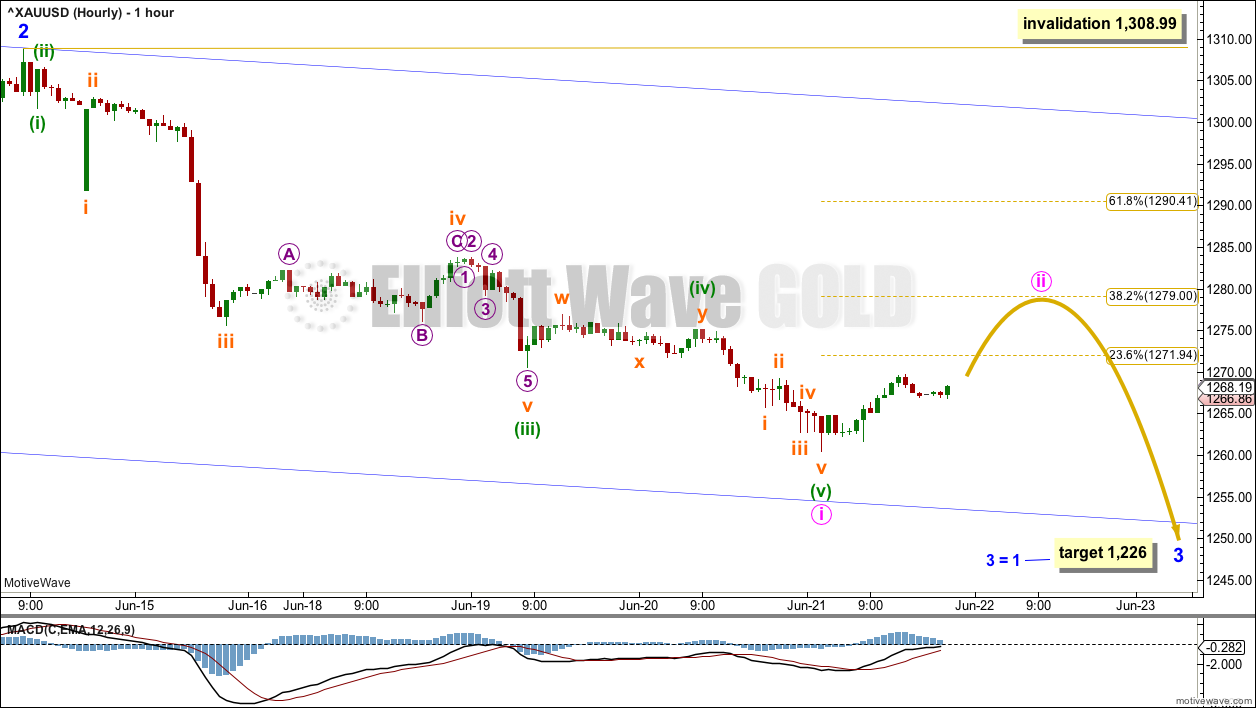
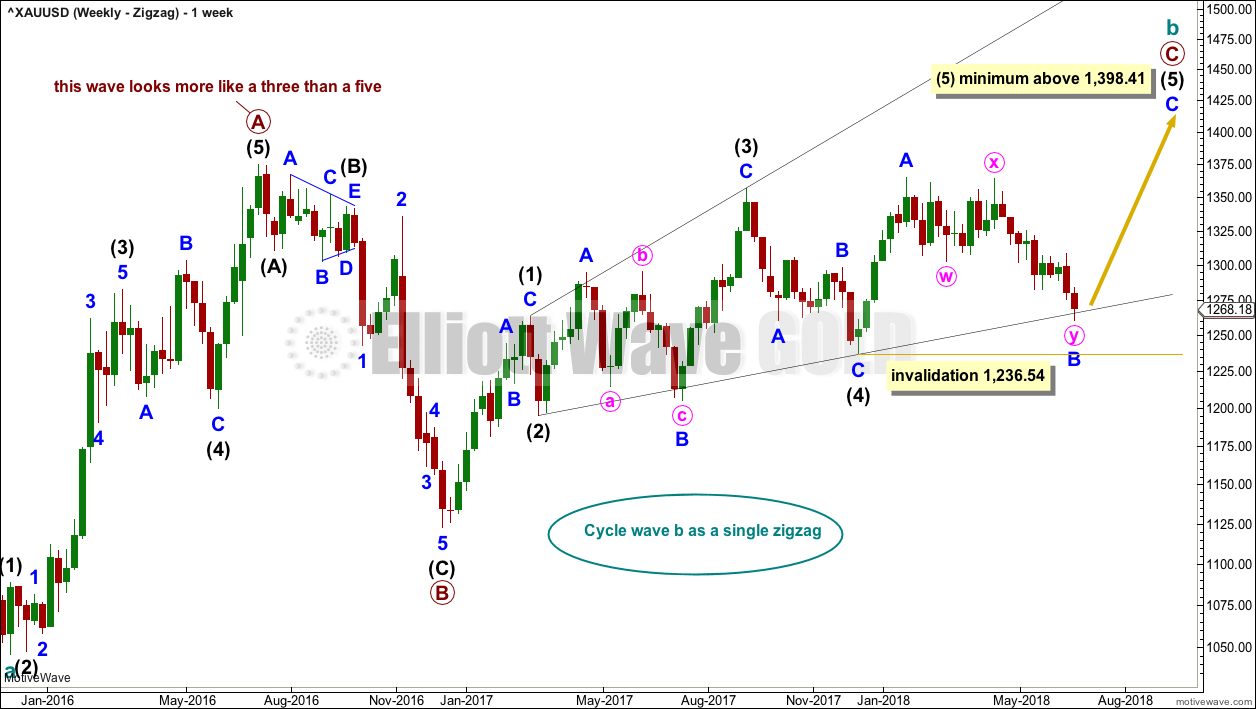
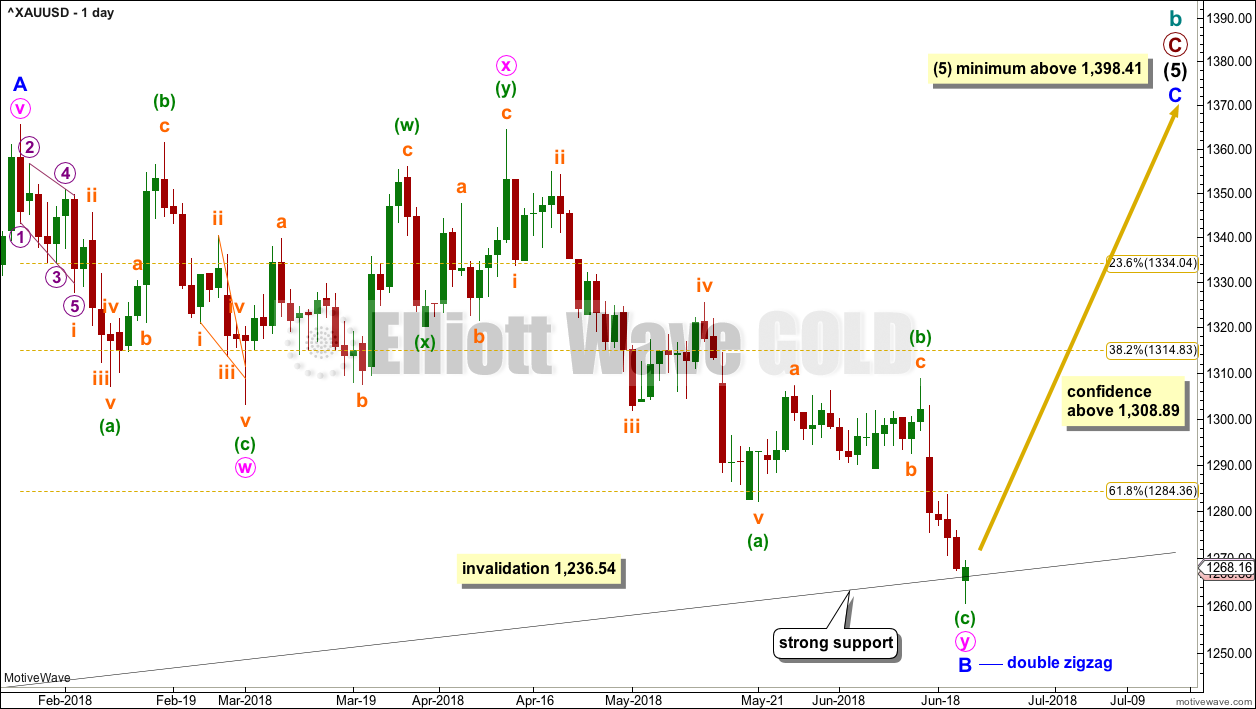
Hourly chart updated:
With a very long lower wick yesterday and now a very small upwards day today, I’d be expecting at least a little upwards movement Monday / Tuesday but it looks like this may be weak and shallow.
The 0.382 Fibonacci ratio is still the preferred target for this little bounce.
GSR update: beginning of water fall drop in 4 hour period. Metals have bottom.
I’m not convinced. Gold is laboring just to stay above 1270, and failing miserably.
The miners are up nicely today, staying above precious resistance (GDX 22.00, and GDXJ 32.50) but this might be just a correction since they’re both very oversold…
We’ll have to see what next week brings…